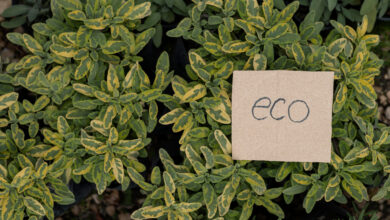How to Identify Eco-Friendly Brands with the Seal of Sustainability

The key factors that can help consumers distinguish authentic eco-friendly brands with the seal of sustainability.
In today’s rapidly changing world environmental concerns are at the forefront of global discussions. Consumers are becoming increasingly conscious of the products they purchase. The rise of eco-friendly brands has been a welcome development, offering environmentally-conscious consumers an opportunity to make more sustainable choices. However, with the growing greenwashing trend, it has become crucial for consumers to be able to identify genuine eco-friendly brands with the seal of sustainability.
The Meaning of Eco-Friendly
Before delving into the identification of eco-friendly brands, it’s important to understand what the term ‘eco-friendly’ truly means. An eco-friendly brand is one that actively considers the environmental impact of its products throughout their lifecycle, from sourcing raw materials to manufacturing, distribution, and eventual disposal. These brands aim to minimize their carbon footprint, reduce waste generation, and prioritize the use of renewable resources. Such companies are dedicated to practicing sustainable business operations and are transparent about their efforts.
The Seal of Sustainability: A Trustworthy Indicator
One of the most reliable ways to identify eco-friendly brands is through the presence of recognized sustainability certifications or seals on their products or packaging. These seals serve as tangible evidence that a brand’s claims of being eco-friendly have been independently verified. Examples of widely recognized sustainability certifications include USDA Organic, Fair Trade, Energy Star, Forest Stewardship Council (FSC), and LEED (Leadership in Energy and Environmental Design).
However, in India, The Disposal Company’s Seal Of Sustainability helps you to recognize plastic-neutral brands. TDC recycles 45,000 Kg of plastic waste per month after collaborating with 70 brands across India, Singapore, and the UK.

Transparency and Traceability
Authentic eco-friendly brands prioritize transparency and traceability in their supply chain. They provide detailed information about the sourcing of raw materials, manufacturing processes, and transportation methods. This transparency allows consumers to assess the brand’s environmental impact and make informed decisions. Look for brands that share their sustainability initiatives, partnerships with ethical suppliers, and their efforts to reduce greenhouse gas emissions.
Lifecycle Assessment
A comprehensive lifecycle assessment is another hallmark of a legitimate eco-friendly brand. This assessment evaluates the environmental impact of a product from its inception to its end of life, considering factors such as resource consumption, energy use, emissions, and waste generation. Eco-friendly brands conduct these assessments to identify areas for improvement and implement strategies to reduce their ecological footprint.
Use of Recycled and Renewable Materials
Eco-friendly brands prioritize the use of recycled and renewable materials in their products and packaging. Look for brands that incorporate post-consumer recycled content into their products, reducing the demand for virgin materials and conserving natural resources. Additionally, brands that use renewable materials, such as bamboo, organic cotton, or biodegradable plastics, demonstrate a commitment to minimizing their impact on the environment.
Social Responsibility and Ethical Practices
True eco-friendly brands extend their commitment beyond environmental considerations to encompass social responsibility and ethical practices. These brands often support fair labor practices, promote community engagement, adopt plastic neutrality, and contribute positively to the well-being of their employees and surrounding communities. Look for brands that prioritize fair wages, safe working conditions, and initiatives that benefit local communities.
Consumer Reviews and Third-Party Endorsements
Consumer reviews and third-party endorsements can provide valuable insights into a brand’s eco-friendly claims. Check online reviews and ratings from other environmentally conscious consumers who have purchased products from the brand. Additionally, look for recognition or awards from reputable organizations that specialize in sustainability and environmental practices.
Conclusion
As consumers increasingly seek to align their purchases with their environmental values, identifying genuine eco-friendly brands has become essential. Furthermore, brands that demonstrate social responsibility and receive positive consumer reviews and third-party endorsements are more likely to be reliable eco-friendly options. Consumers can confidently support brands that indicate a Seal of Sustainability given by The Disposal Company to mitigate plastic pollution.
Join the sustainability revolution in India with The Disposal Company’s innovative climate action platform, which enables brands to become plastic-neutral and carbon-neutral. Click here to find out more.




